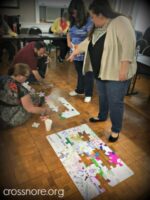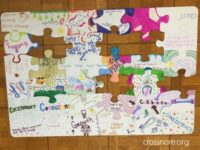If you spend any time on the Crossnore School and Children’s Home (CSCH) campuses you will hear the word Sanctuary a lot! Here at CSCH, we have not only adopted this as our model but as our way of life.
So, what is this Sanctuary Model?
The Sanctuary Model is a blueprint for clinical and organizational change. The model promotes safety and recovery by creating a trauma-informed community. We know that trauma is pervasive in the experience of human beings today. This knowledge helps us focus on the people who seek services, but also on the people and systems who provide those services.
The Sanctuary Model was developed by Dr. Sandra Bloom and her colleagues. They developed the model for use with traumatized adults. And adapted model is now used in hospitals, residential communities, schools, foster care and other programs that serve victims of trauma. This model gives us a set of shared values and language. And it helps us provide hope and healing to our children and our staff.
A Way of Life
People of all ages and in various walks of life have experienced trauma. Trauma effects how we communicate. Sanctuary creates a healthy, therapeutic living community for our children and the staff. CSCH’s Sanctuary community is strong, resilient, tolerant, caring, knowledge-seeking, and cohesive. In our community, staff are thriving, people trust each other to do the right thing, and our children are making progress in their own lives.
The Sanctuary Model is comprised of Four Pillars. CSCH recently trained our staff on the second Pillar: The S.E.L.F. Framework. This Pillar uses the acronym S.E.L.F:
“S” is Safety: physical, psychological, social and moral safety.
“E” is Emotional Management: recognizing and handling feelings without hurting one’s self or others.
“L” is Loss: acknowledging and grieving past losses or traumas. This includes moving towards the future with the understanding that all change involves loss.
“F” is Future: Re-establishing the capacity for choice and engaging in new behaviors rather than repeating old patterns.
These four components allow us to focus on the most important aspects of helping people heal from trauma in a simple and accessible way. This framework is also used for describing organizational problems and creating solutions without casting blame or becoming paralyzed by defining the problem.
Quarterly Training
The Sanctuary trainers get very creative in planning each quarter’s training. In this session, each training group learned about the four aspects of SELF. Afterwards, some hands-on activities cemented our learning. Activities included an online game where each participant logged in on their phone to play. The competition got very intense!
Another activity was to think about the future of our organization and where we hope to be in the next five years. Each employee received a puzzle piece to decorate with their vision for the future. The puzzle will be completed, framed, and will hang in one of our campus buildings.
This post was written by Becky Keener, Program Excellence Administrative Assistant





